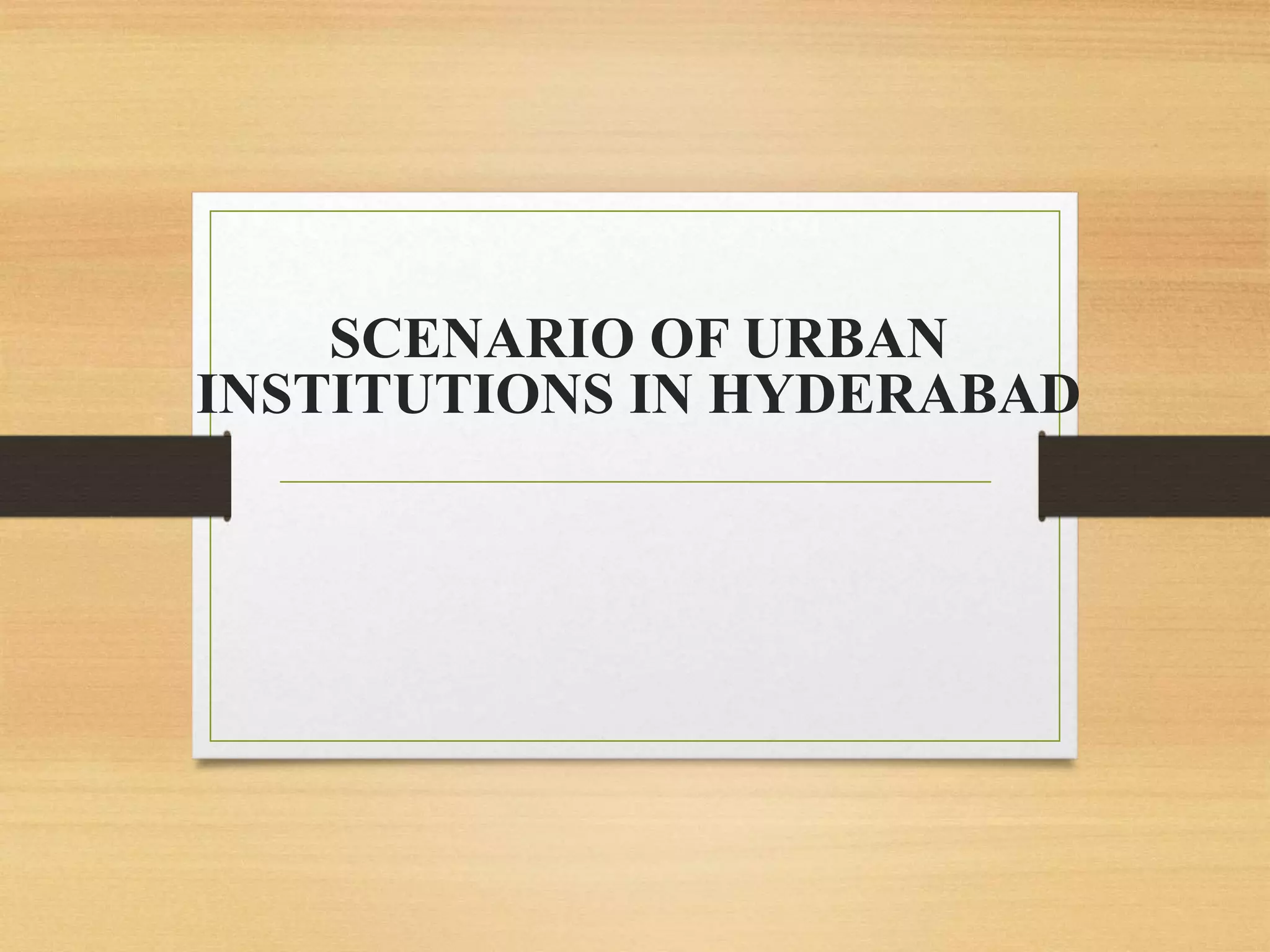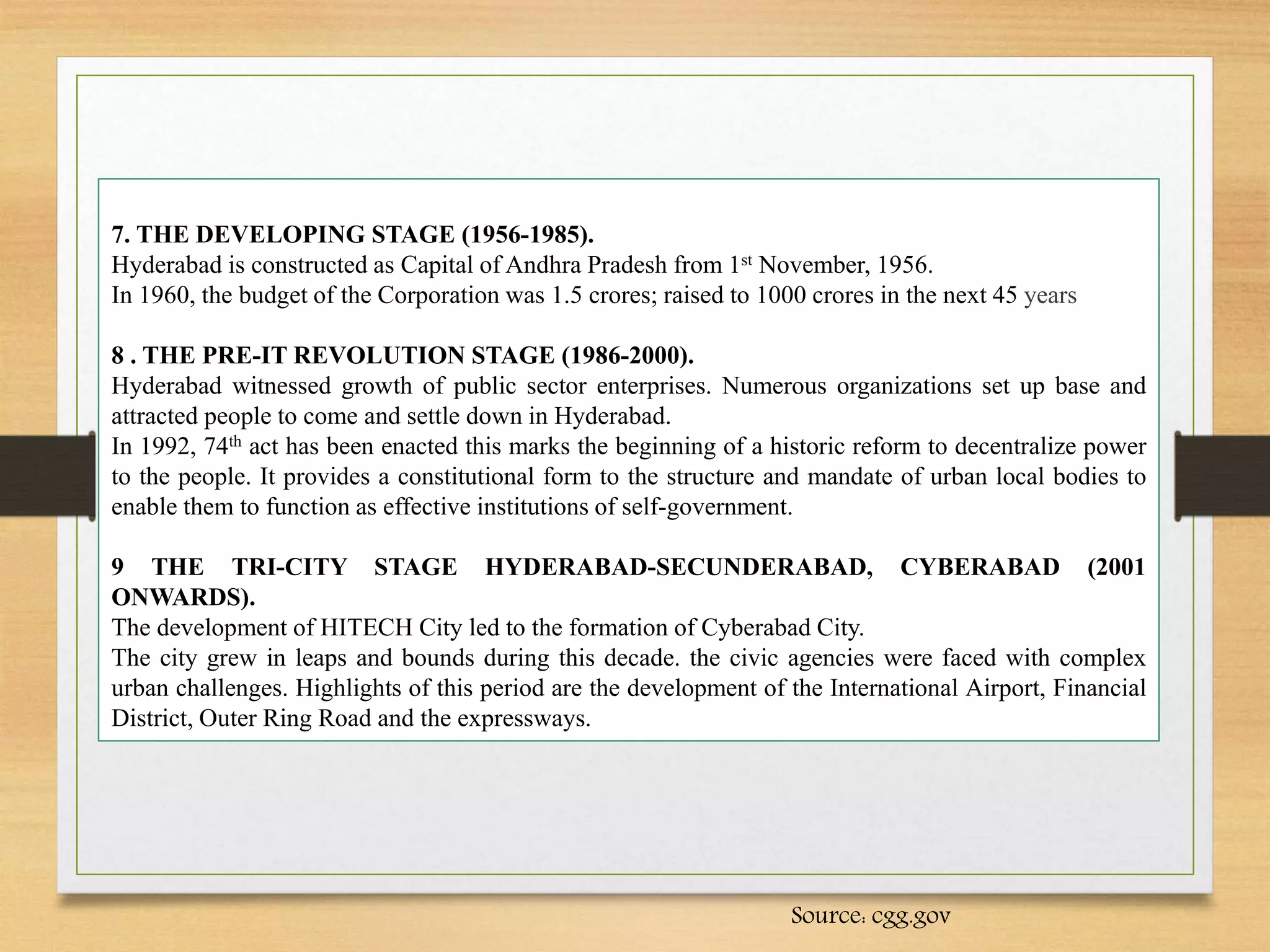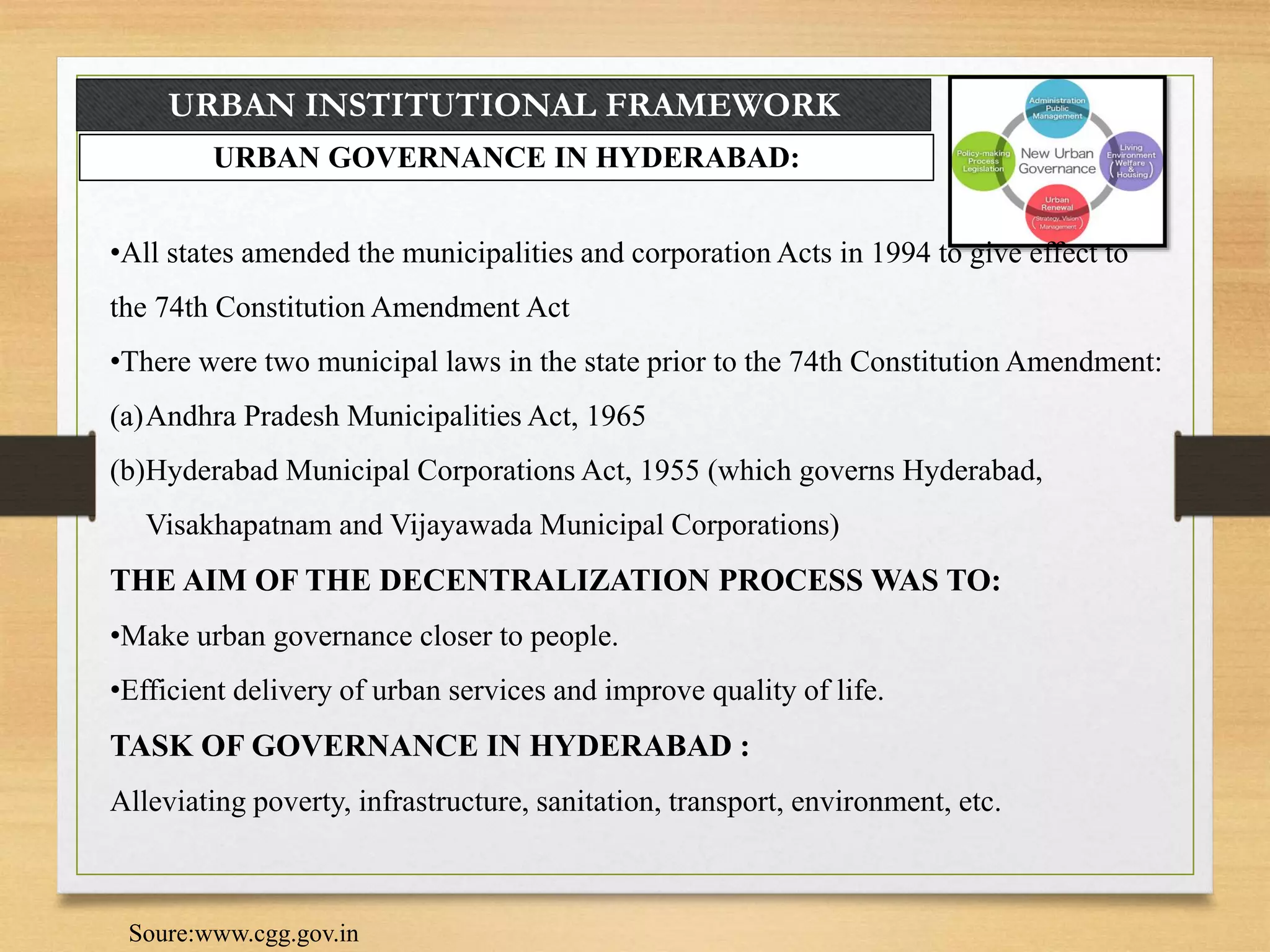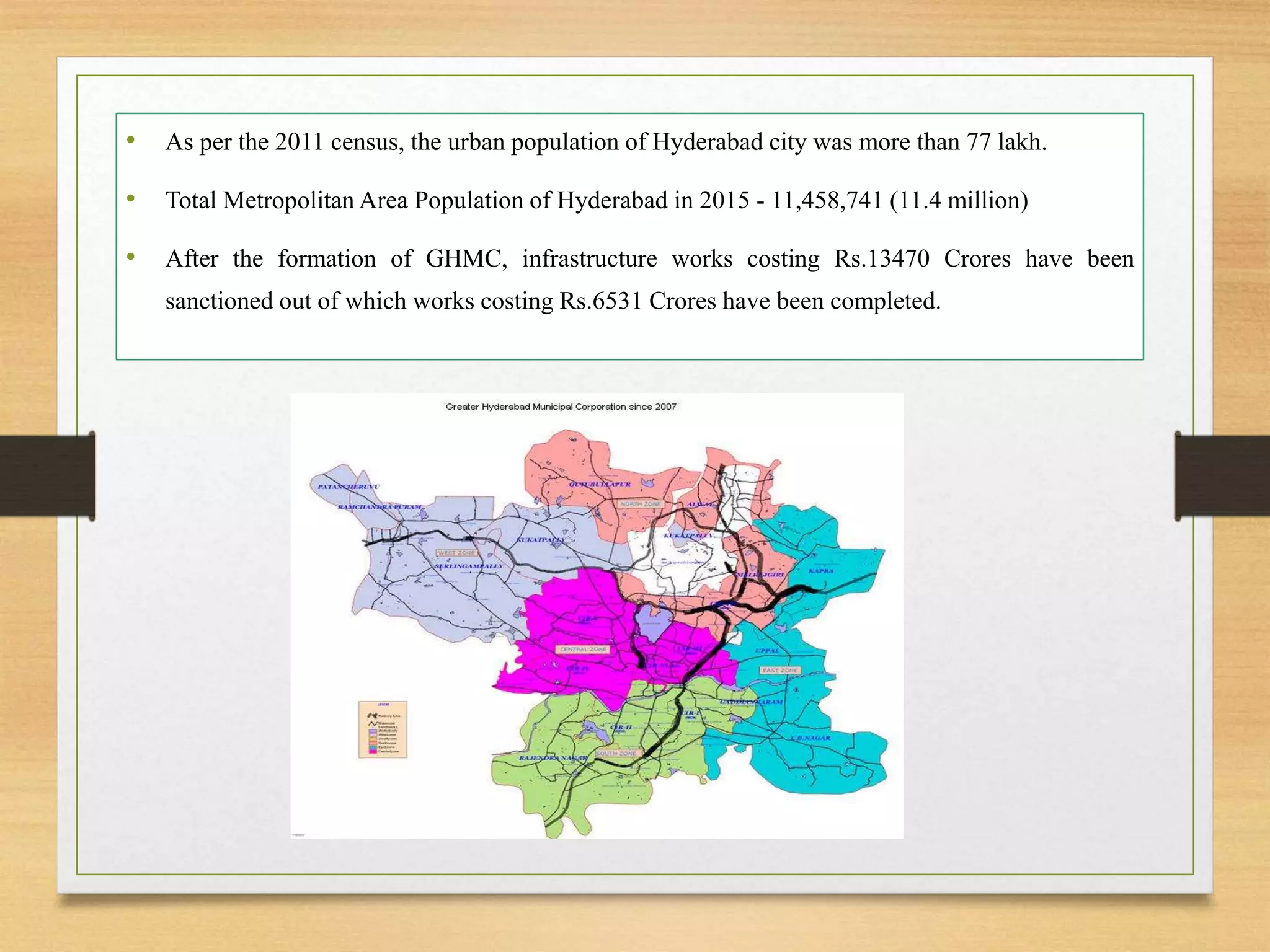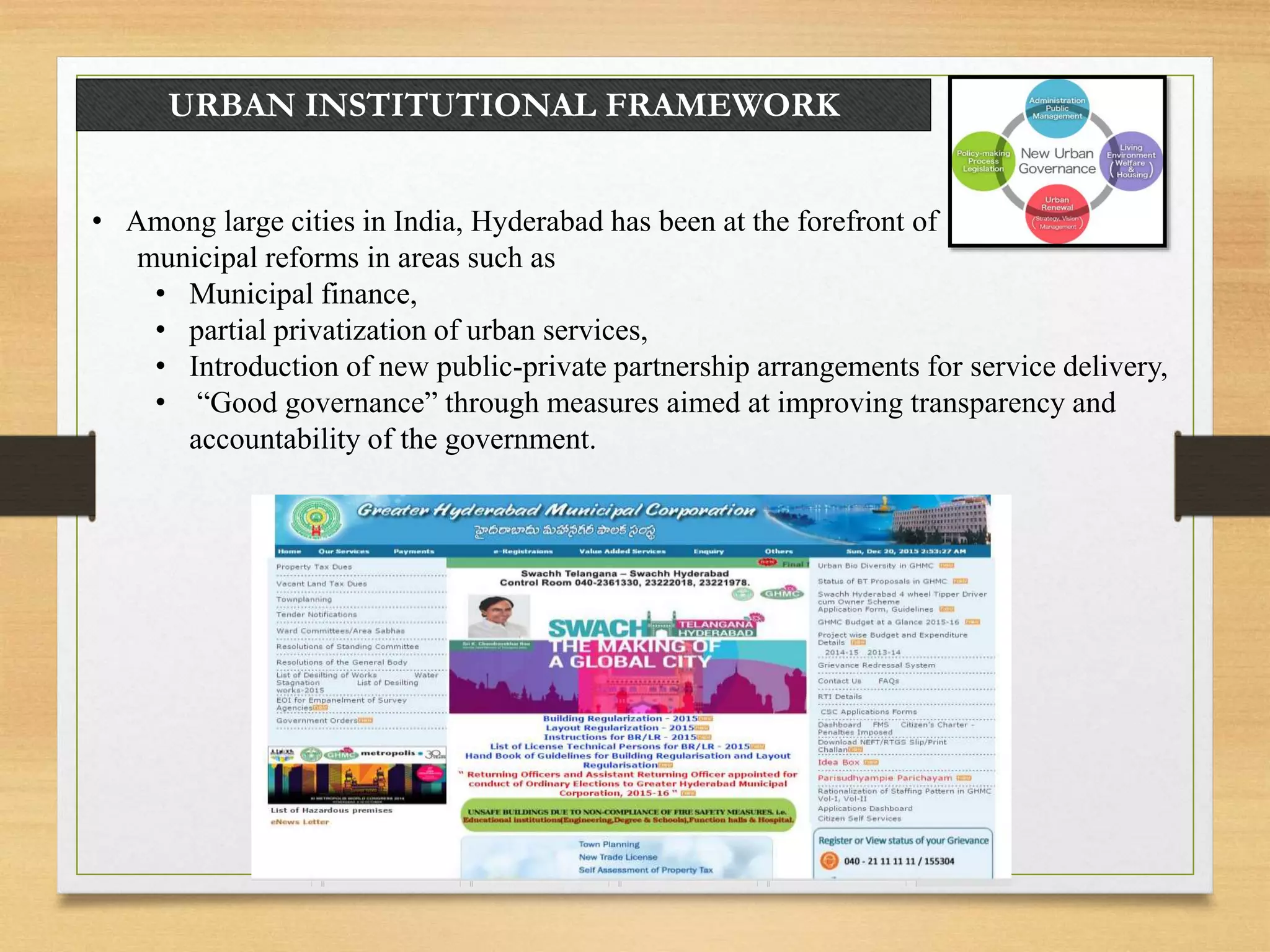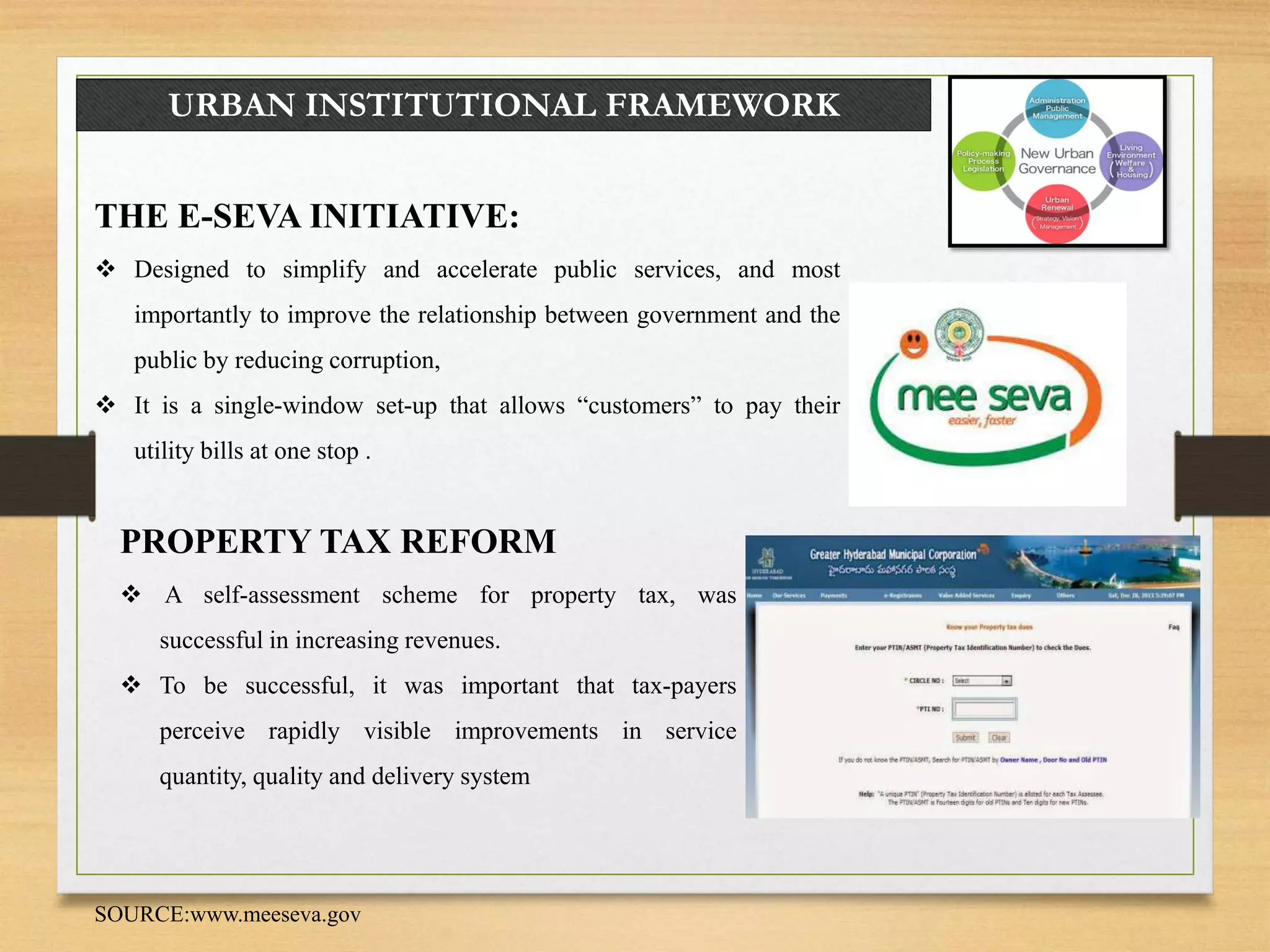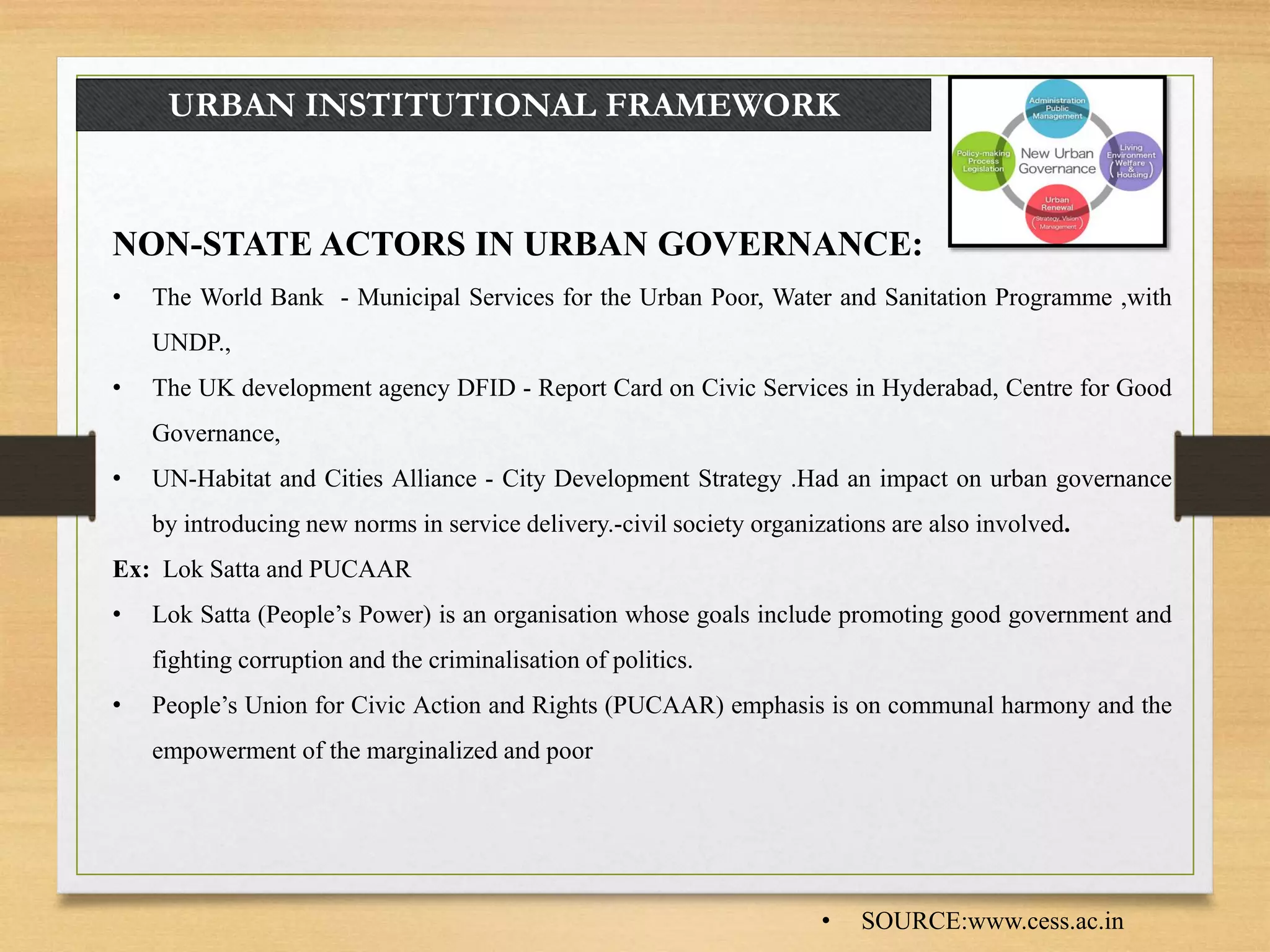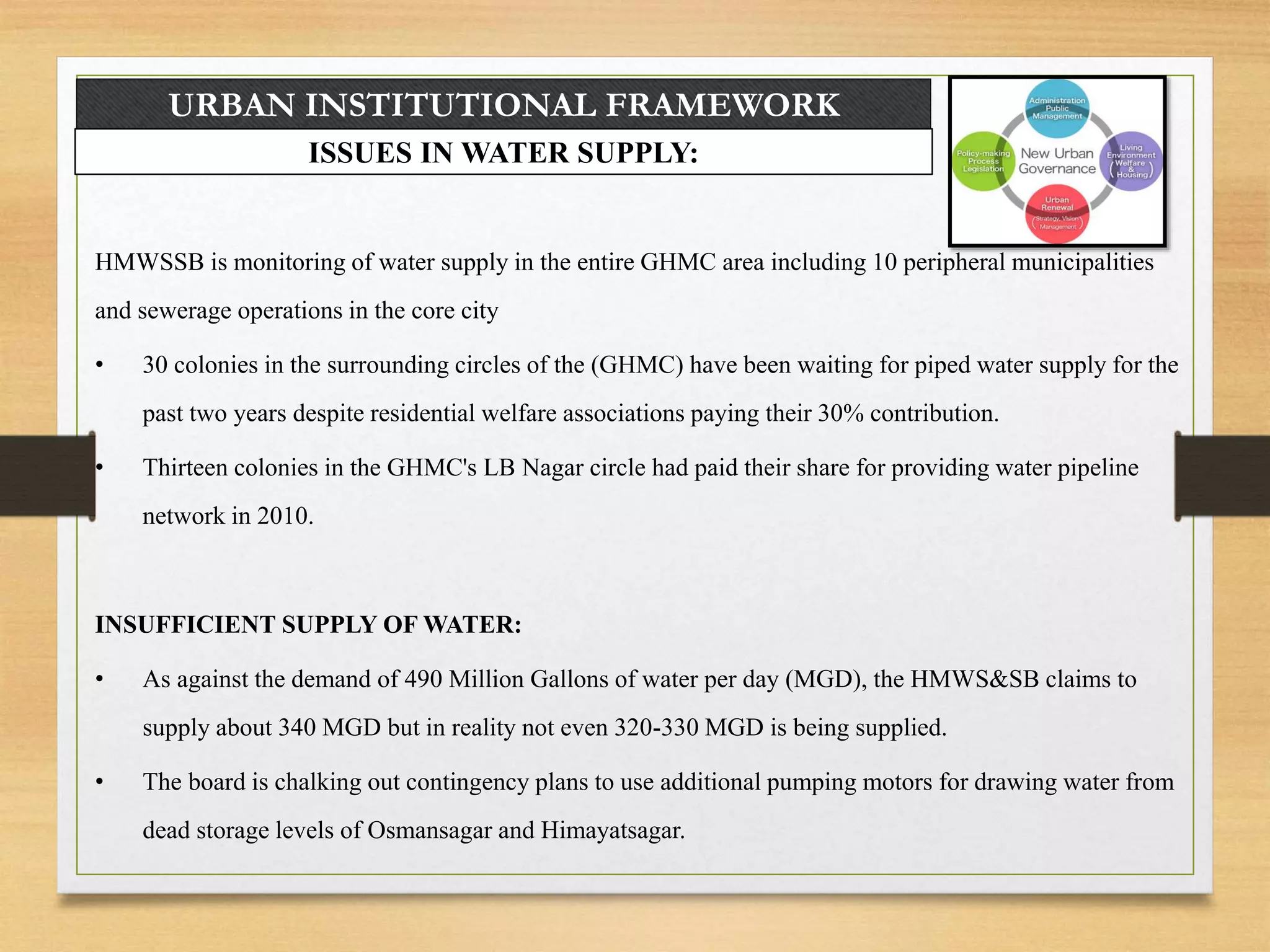The document discusses urban institutional frameworks and governance in India. It provides background on programs like JNNURM and AMRUT that aim to enhance urban infrastructure and governance. It outlines the objectives, importance, funding structures, and organizational setups of these programs. It also analyzes issues in JNNURM implementation and how AMRUT aims to address them to improve urban development outcomes.
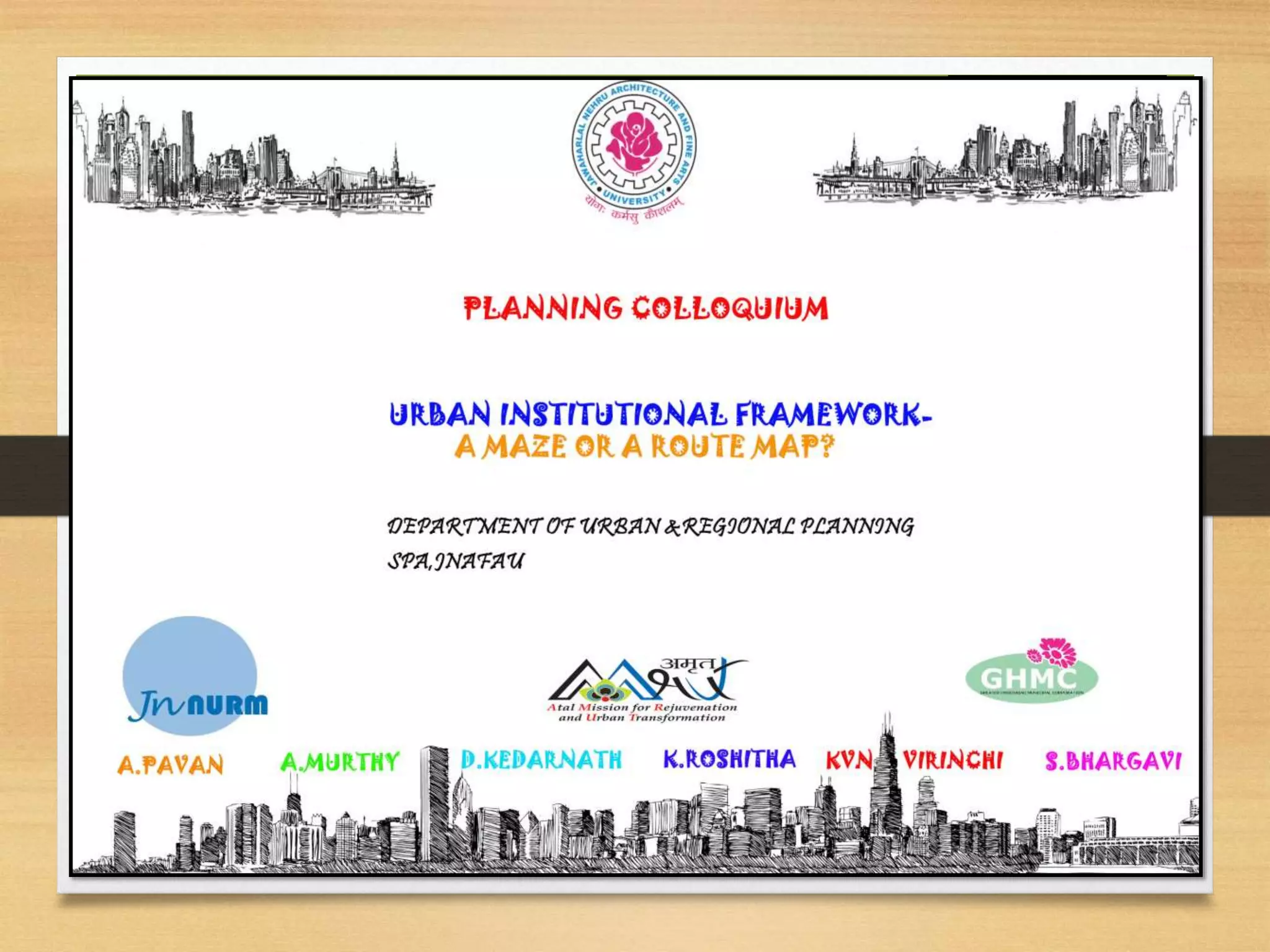




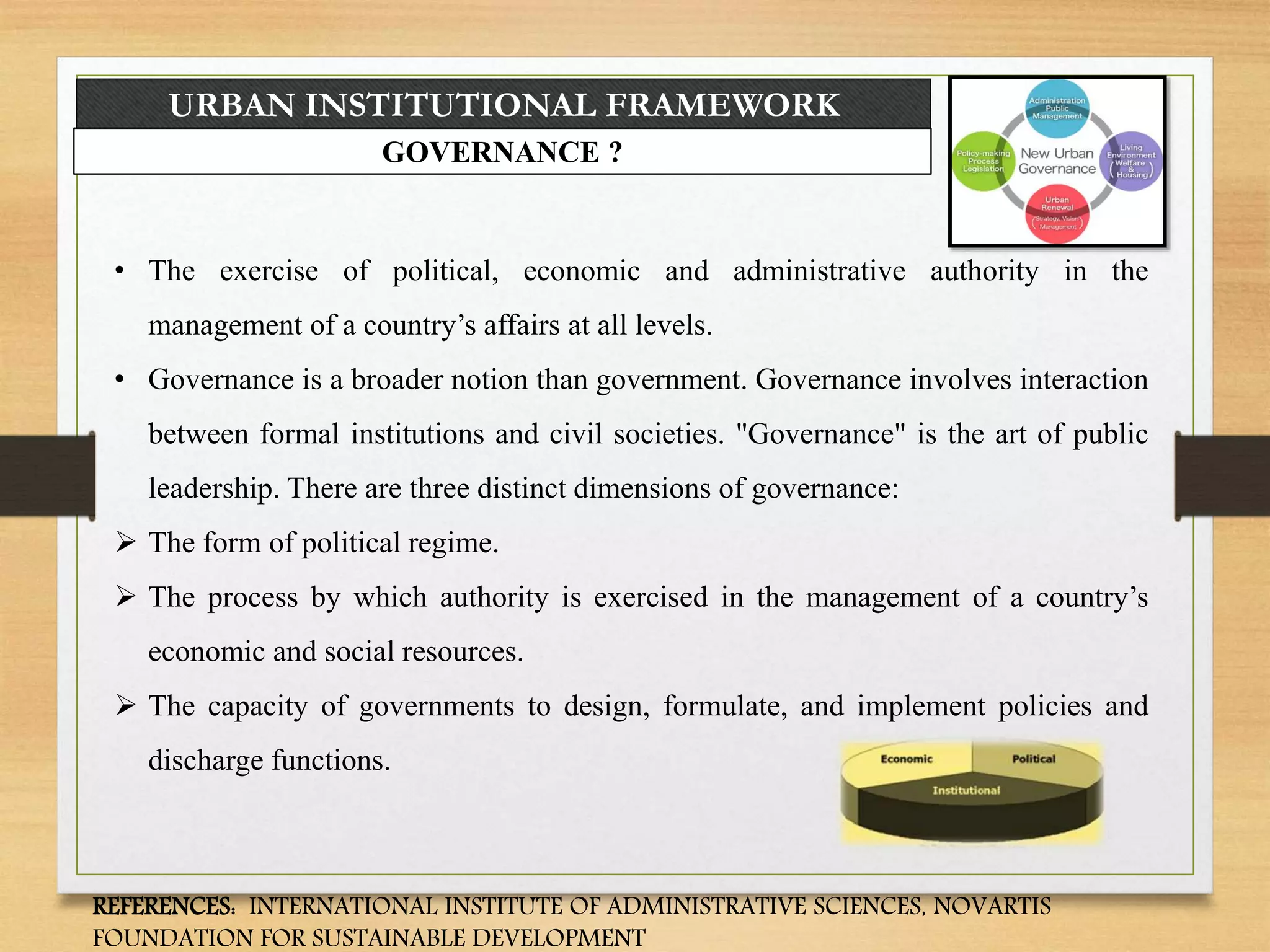


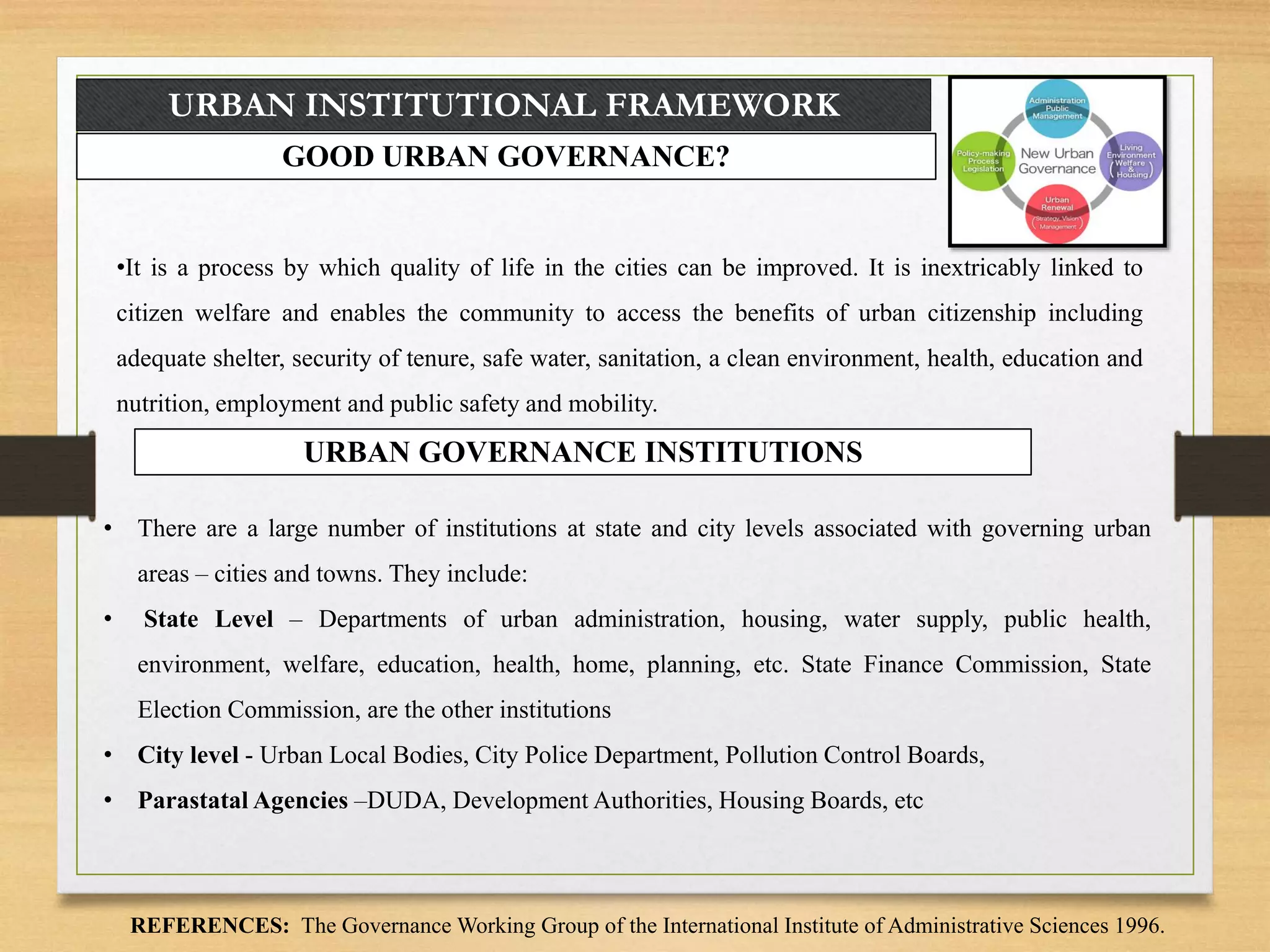





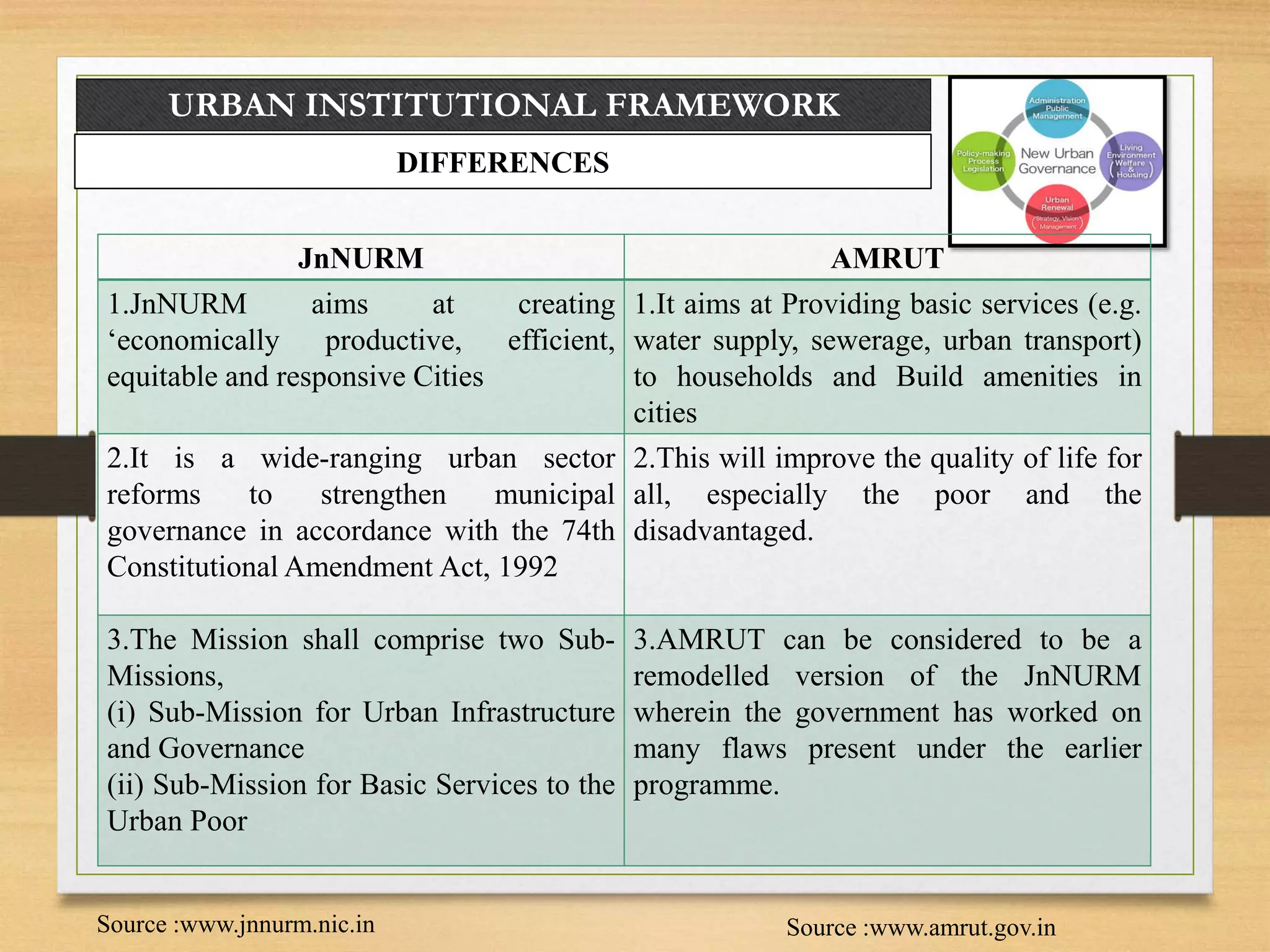








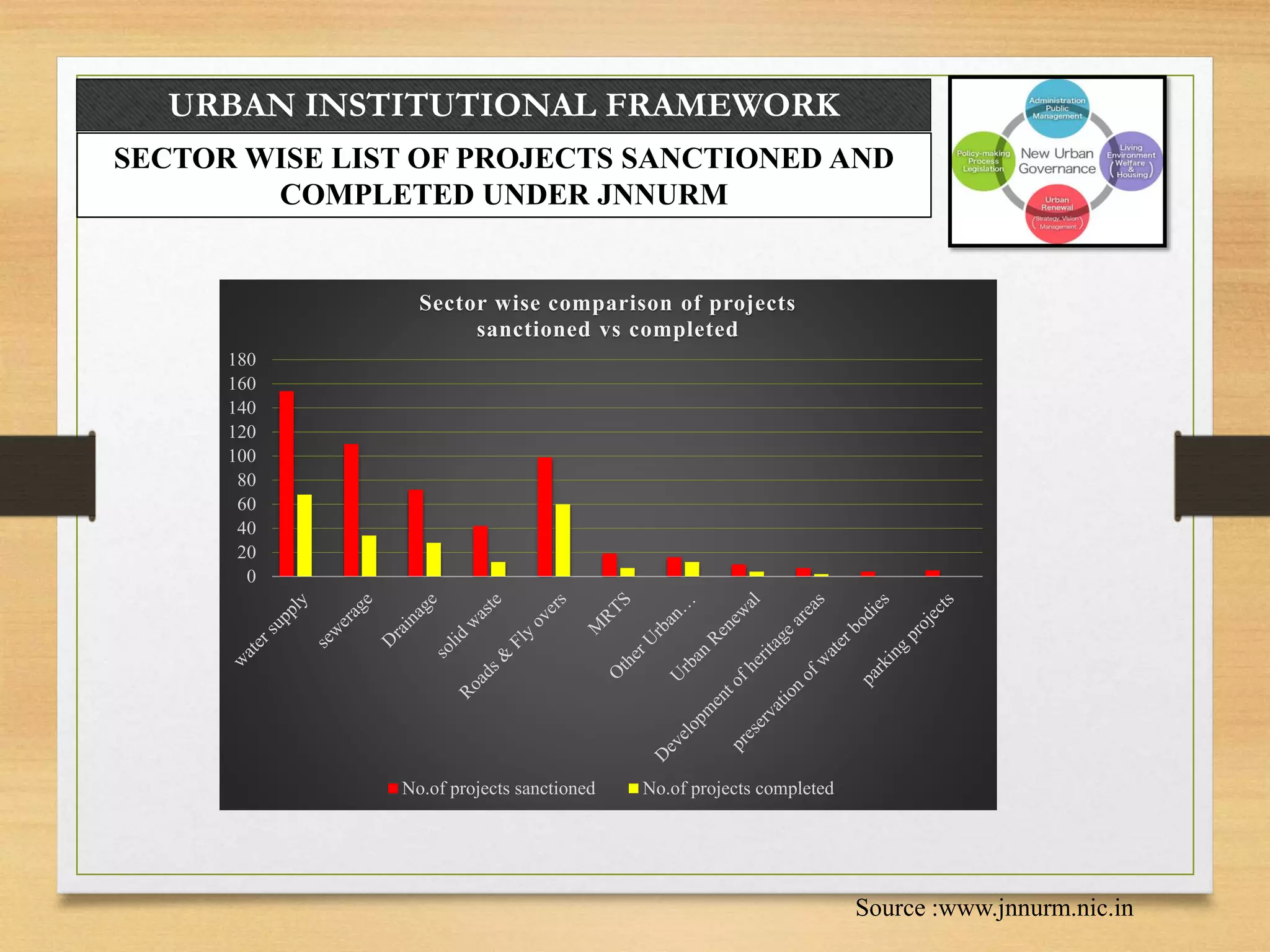

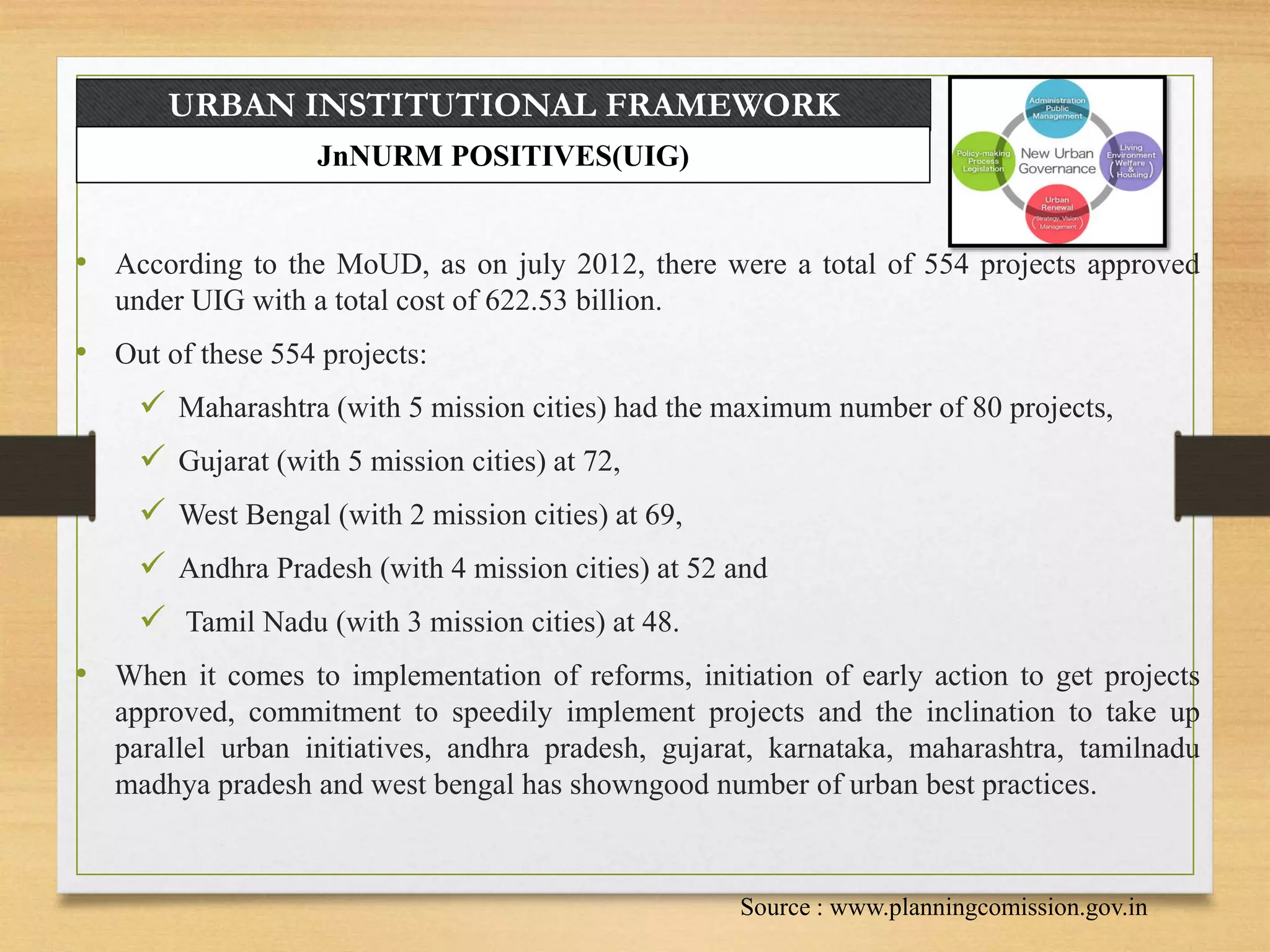
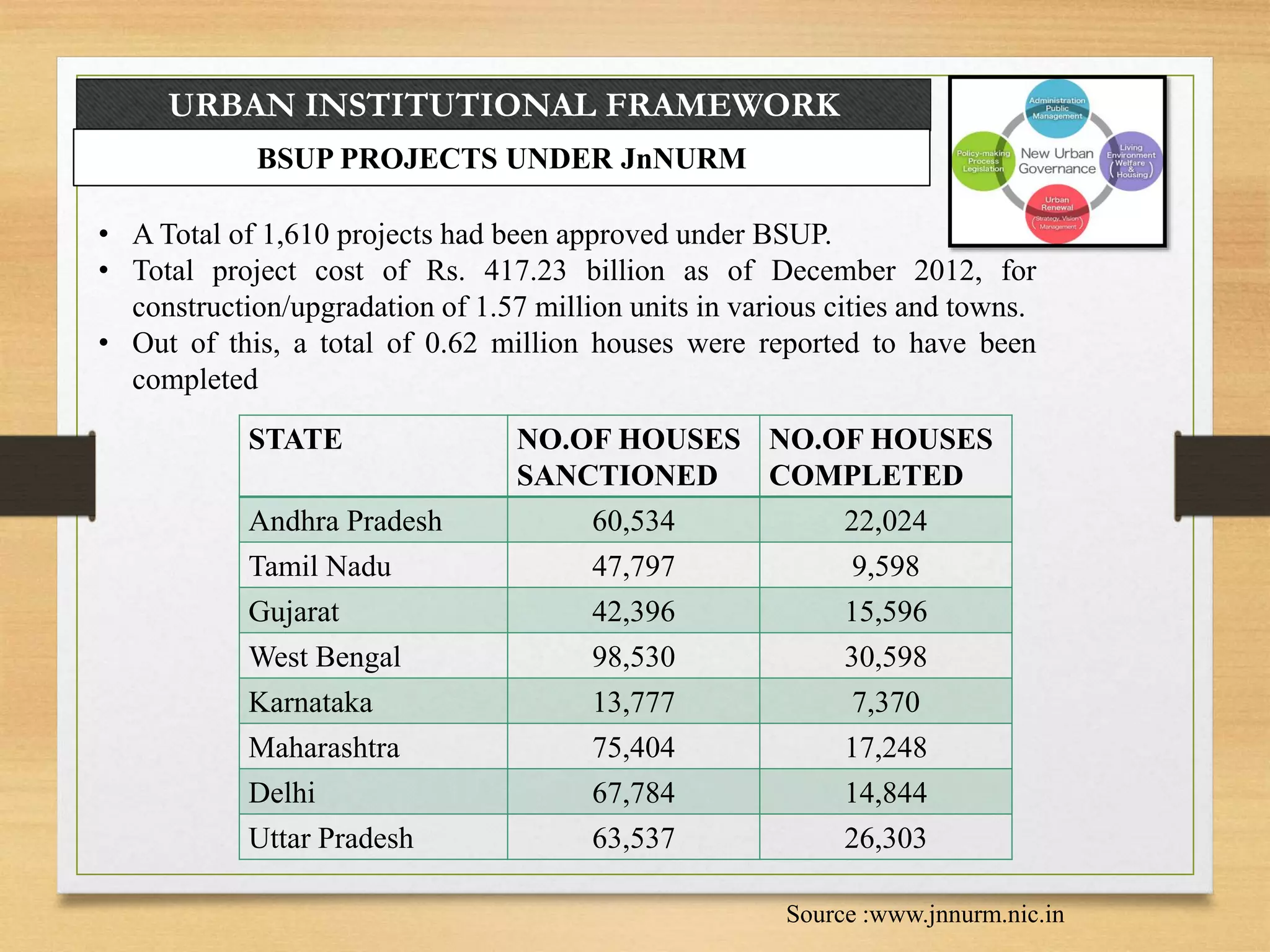
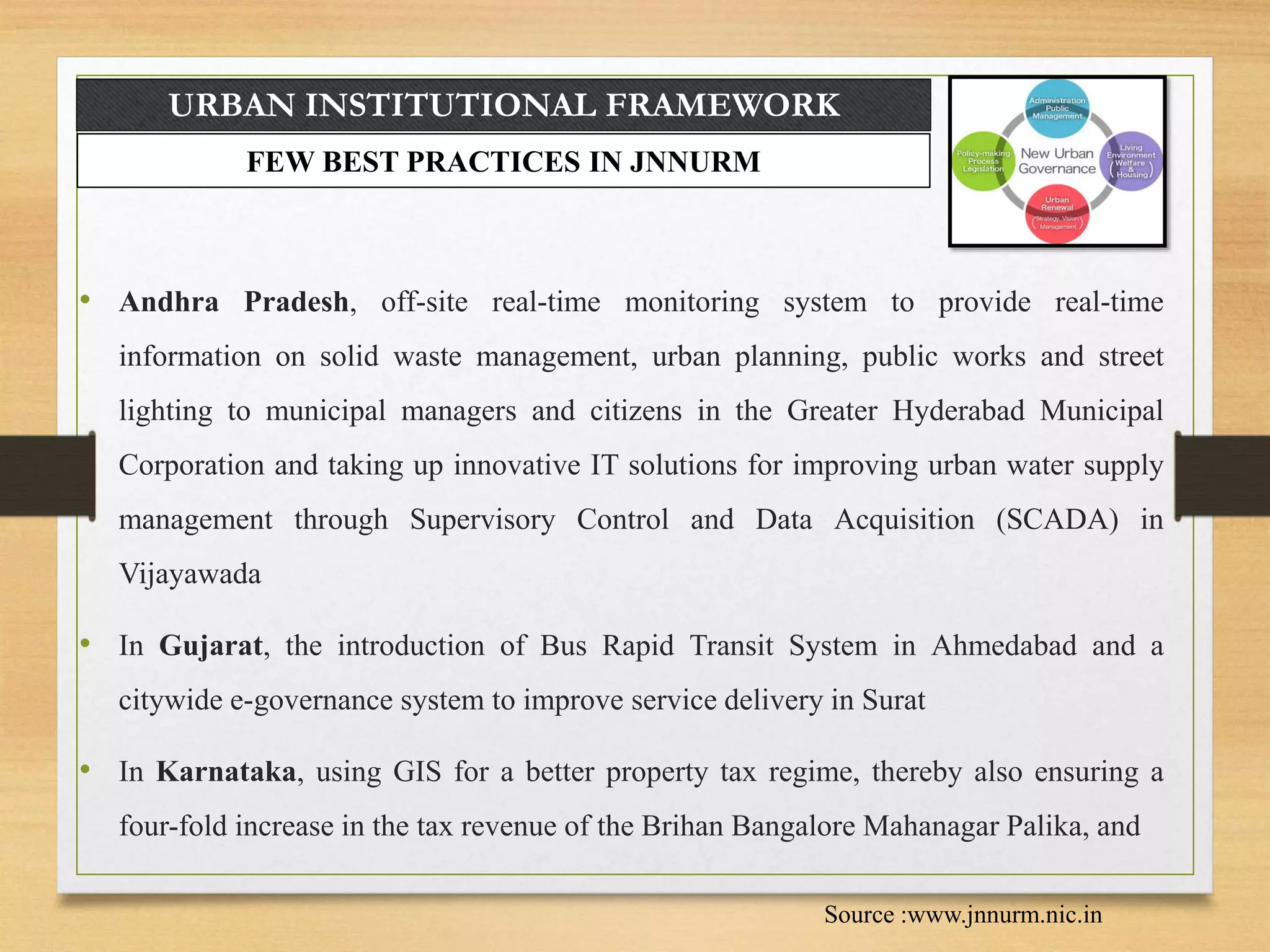
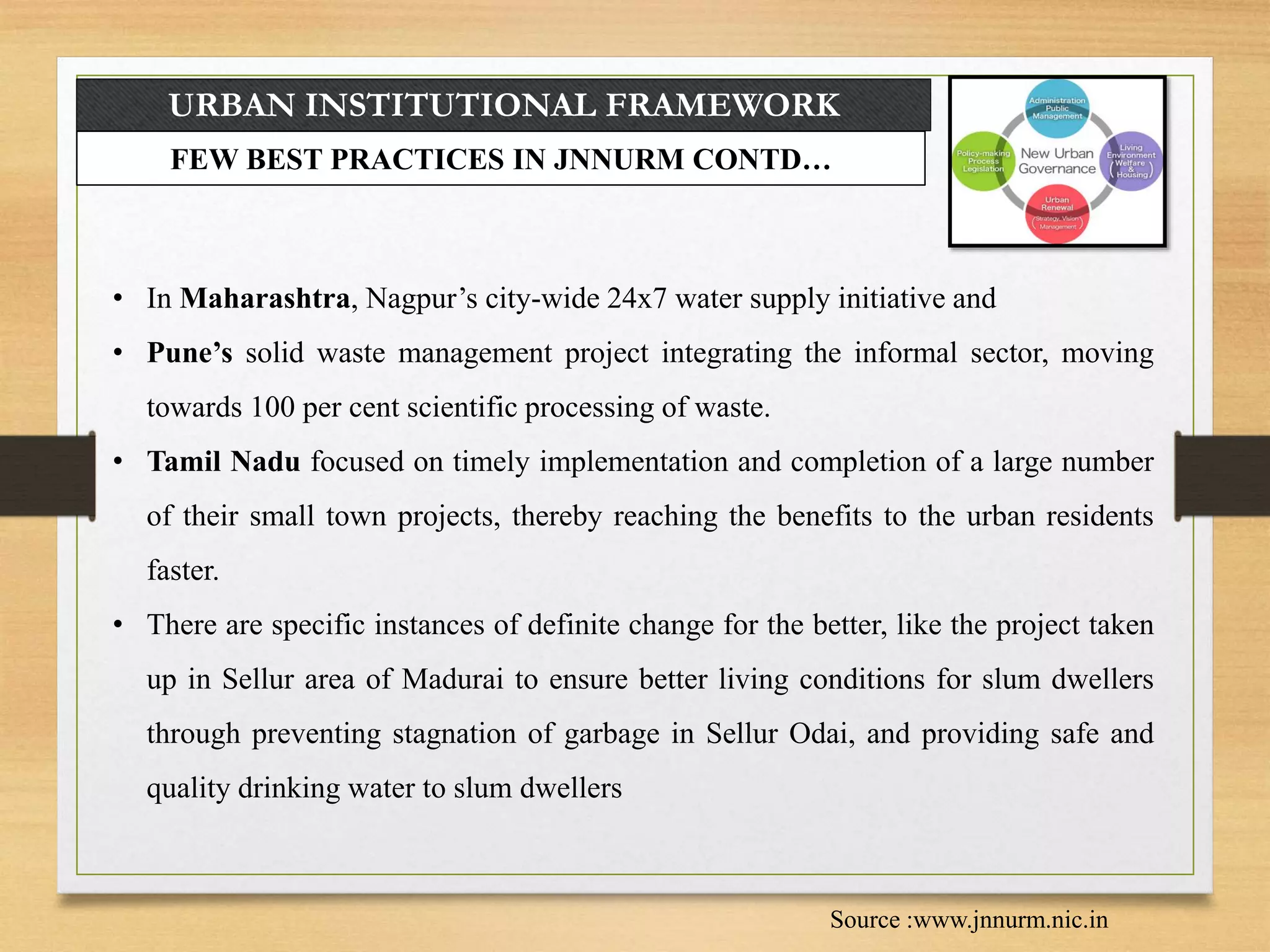

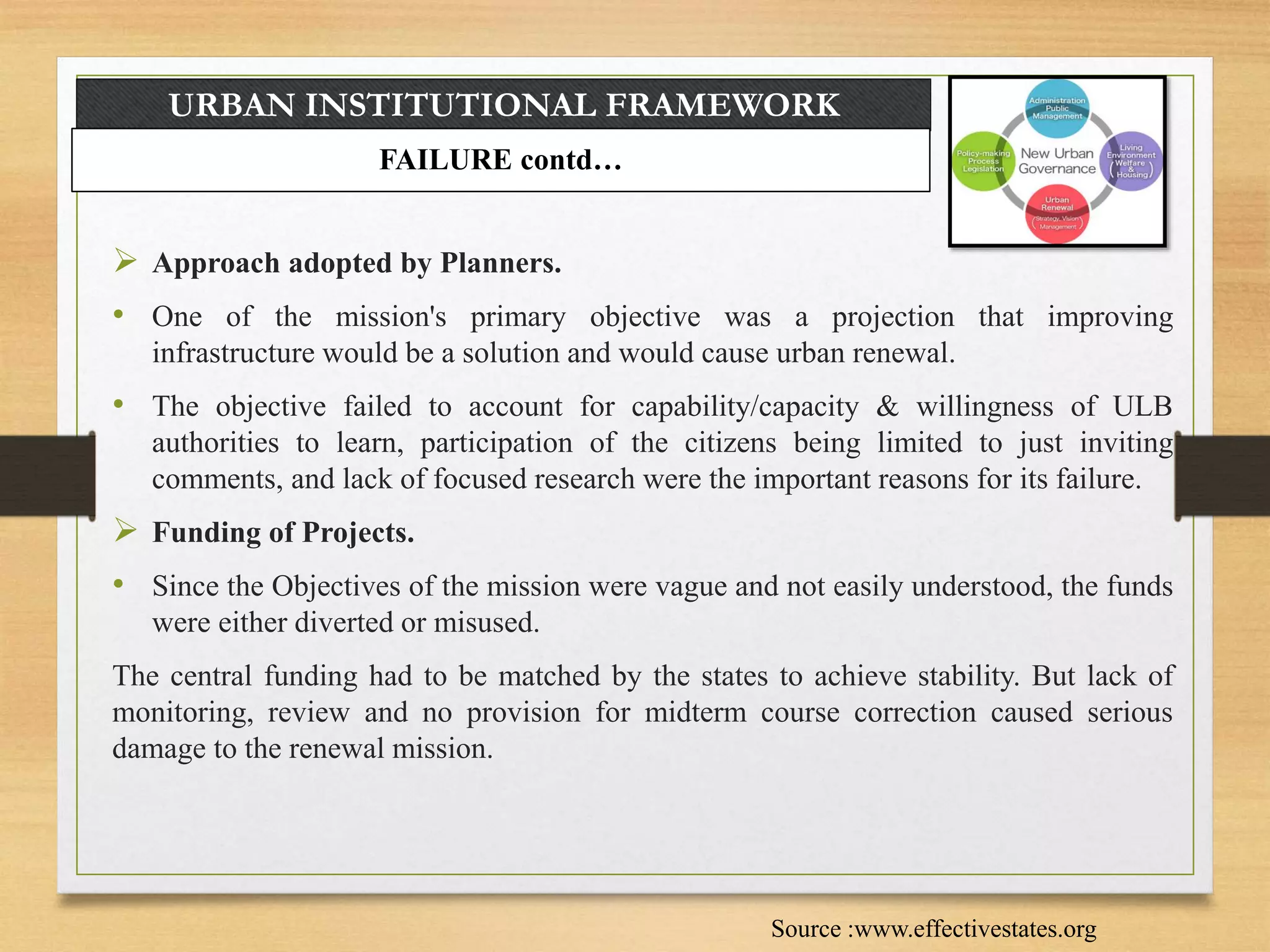
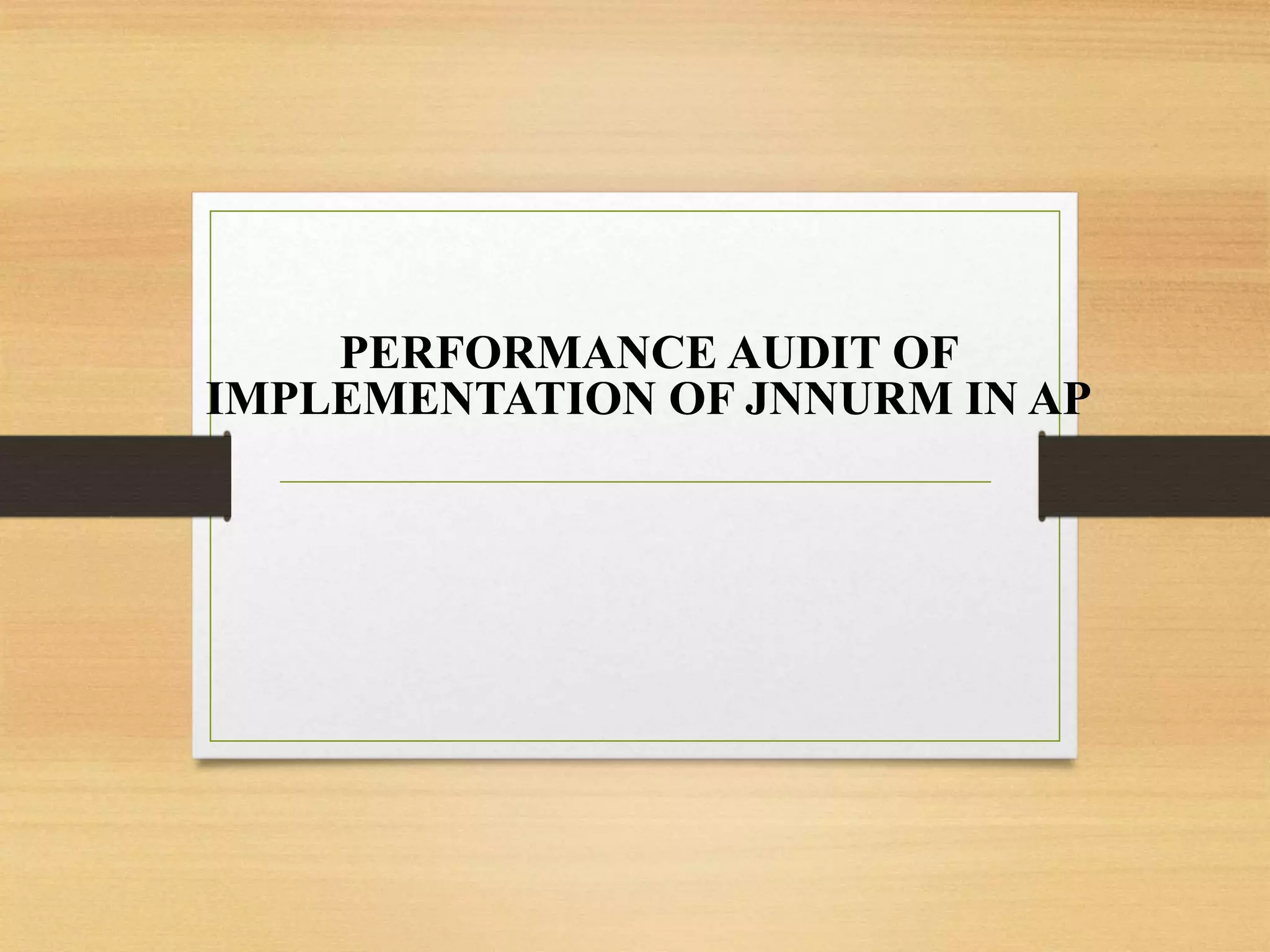








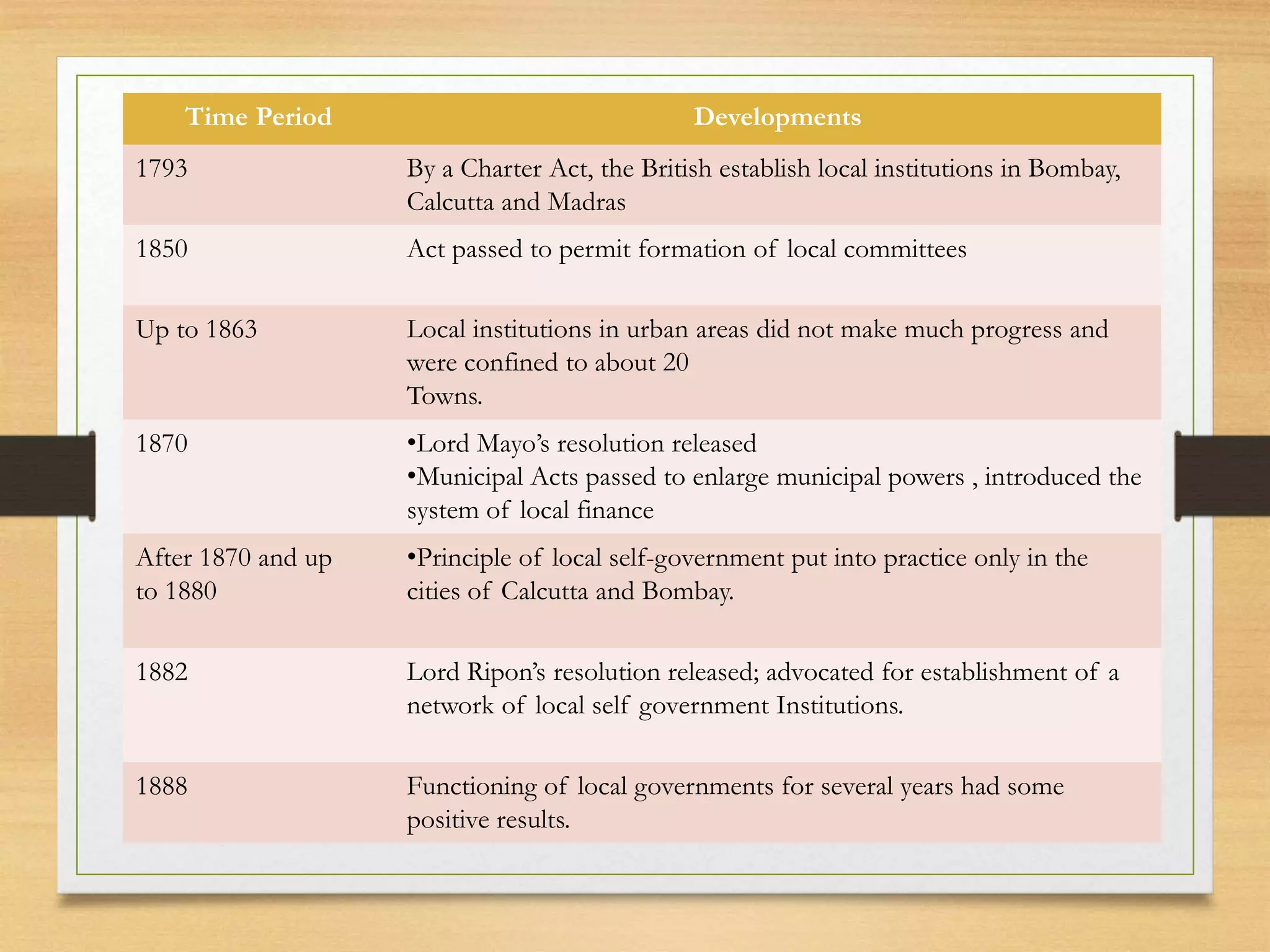

![Time Period Developments
1989 Attempt to introduce the Constitution (63rd Amendment)
Bill; also known as Nagarpalika
(Municipality) Bill; contained provisions for strengthening
of urban local governments
1991 Bill [named Constitution (73rd Amendment) Bill]
introduced again by the Government
1992 Constitution (74th Amendment) Act finally accepted and
enacted
Since 1992 Most State municipal Acts amended
• Reforms underway in the structure and functioning of
urban local governments](https://image.slidesharecdn.com/finalcollo-160121051257/75/planning-for-urban-governanace-43-2048.jpg)
